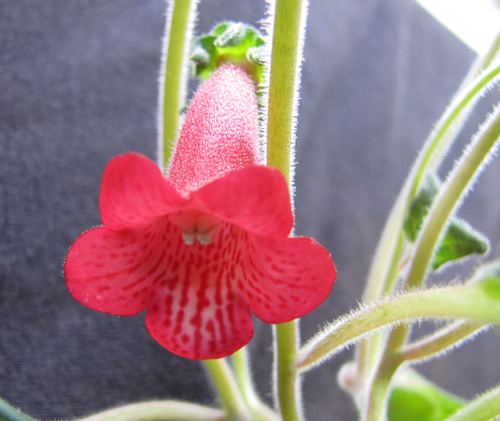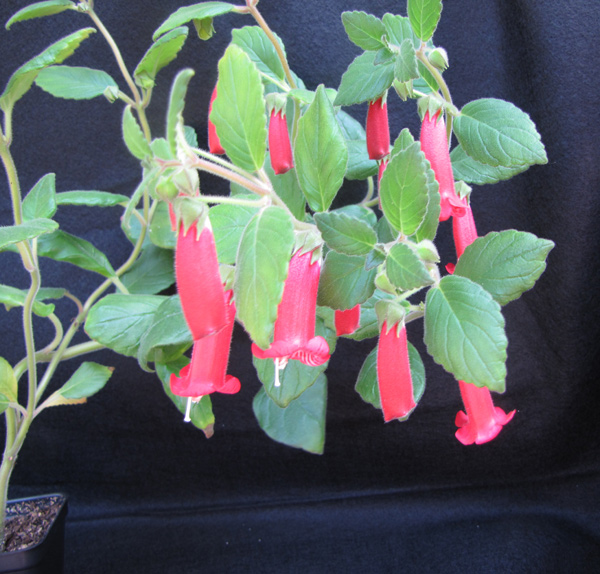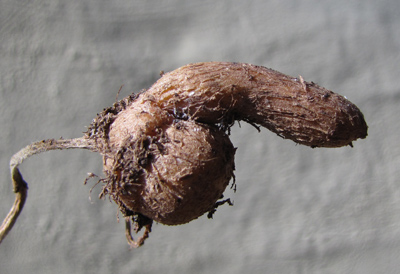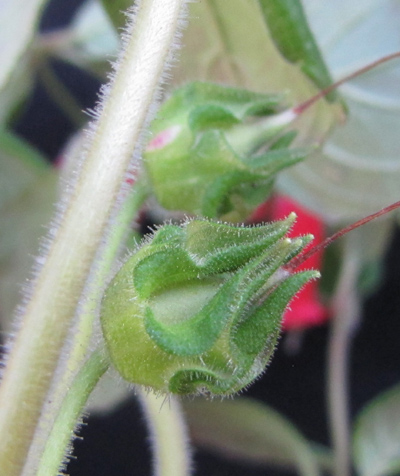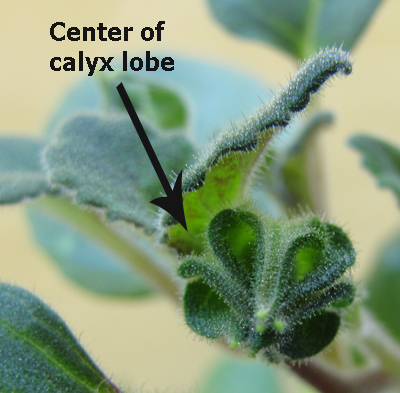Sinningia harleyi
This plant is very attractive, but it can be a challenge to keep it alive. If you can find it, give it a try!
I have one seedling of Sinningia harleyi from Brazil Plants seed, sowed in 2010. It bloomed for the first time in August 2012.
The nearest relative of this species appears to be S. nordestina, with which it seems to share the rambling habit: weak stems which sprawl if they are not supported, unless the plant is grown in strong light. So far, I have only grown this plant in artificial light.
